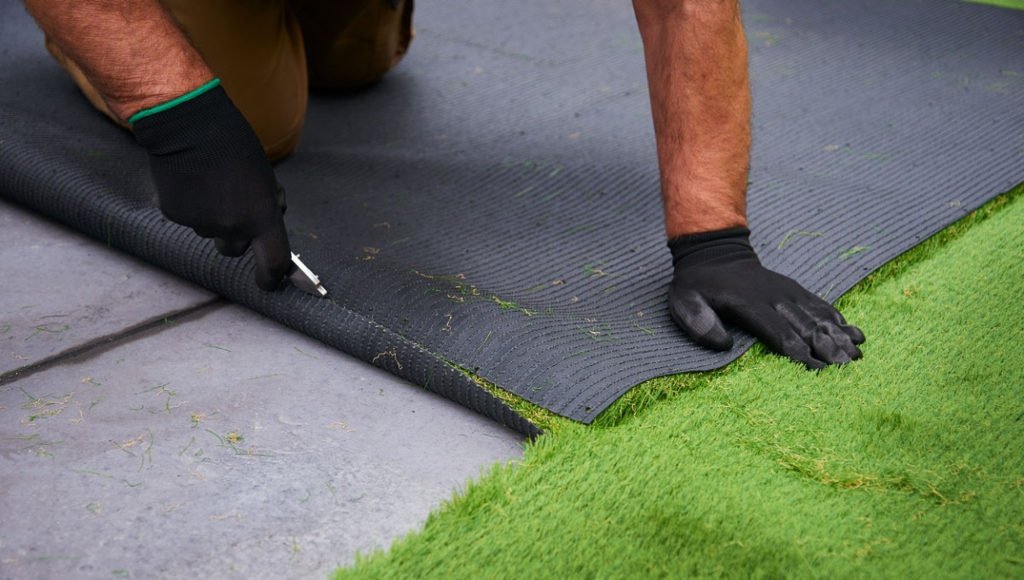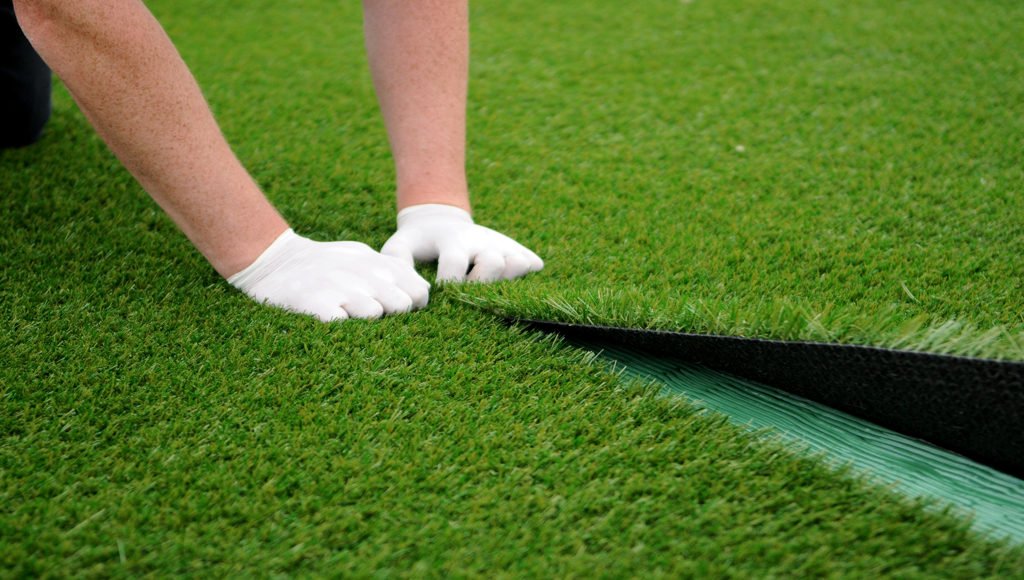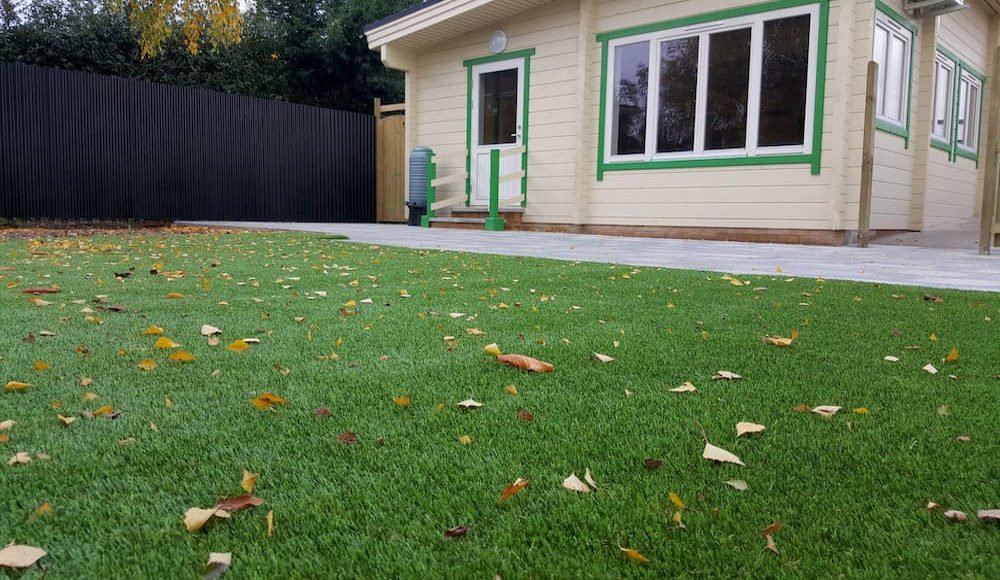Placing artificial grass on concrete is becoming an increasingly popular way to add greenery without the hassle of regular lawn maintenance.. However, there are several important factors to consider before beginning such a project. Proper planning and preparation are key to ensuring your artificial grass thrives over the long term.
Important Things To Know Before Installing Artificial Grass On Concrete
Artificial grass, commonly called synthetic turf, is a viable substitute for natural grass in areas where lawn care is difficult. Artificial turf is made to appear and feel like real grass and is resilient and easy to clean. Installation and maintenance can keep artificial lawns green for 25 years.
Patios, walkways, and driveways are flat and sustain fake grass nicely. Porous concrete drains excess rainwater from the turf, preventing puddles. Synthetic grass on concrete might be difficult to install without forethought.
Read more : Important Artificial grass installation tips
Site Evaluation
Before installing artificial grass on concrete, it’s important to carefully look over the installation spot. This will clarify variables like covered area, sunshine exposure, drainage, and access locations.
Start by drawing out the exact size and shape of the room with chalk or spray paint. Measure the area to find out how many square feet it is all together. You can then buy artificial grass by Omni Floor to cover the concrete, plus a little extra to sew and tape the sides.
Look at where the water goes when it rains. For fake grass not to get soggy, it must drain well. Find the low spots where water pools after it rains a lot. In these trouble spots, you might need to grade the ground or add downspouts to keep the turf from getting too wet.
Lastly, think about the most common ways to get to the area. Places with a lot of foot traffic will need denser, more durable grass that doesn’t mat down or wear down easily. Finding these entry points early on lets you make the project last as long as possible.
Base Preparation
Prepping the concrete for turf installation takes time but is an essential step. The goal is to create a smooth, even surface free of cracks, holes, bumps, or changes in height across the area.
Begin by thoroughly cleaning the slab using a concrete degreaser to remove any oil or chemical residues left behind. A pressure washer on a low setting easily eliminates built-up dirt, moss, or mold. Allow the surface to fully dry before moving to the next steps which include:

- Filling divots, cracks, or holes with a polymer-modified concrete leveler, allowing it to fully cure per manufacturer guidelines
- Grinding down raised slab edges or surface irregularities using a concrete grinding machine
- Sealing the concrete with an appropriate latex-based sealer compatible with artificial grass adhesives
Ideally, the prepared base should have no more than 1⁄4 inch variation across 10 feet of surface. Ensuring the subsurface is as flat and smooth as possible prevents future rippling, buckling or separation of the artificial turf.
Proper Drainage
Excess moisture under artificial grass leads to premature breakdown and promotes bacterial and fungal growth resulting in unpleasant odors. Concrete’s natural porosity offers built-in drainage; however, taking additional steps helps water flow away even faster for optimum performance.
For Sites with Good Drainage:
- Install the turf in sections, starting at the highest elevation and working downward to prevent moisture entrapment.
- Maintain a 1-2% slope/grade across the installation area to facilitate drainage.
For Sites Prone to Water Collection:
In addition to the steps above also consider adding:
- Drain spouts are inserted through the concrete every 8-10 feet along slope lines. Connect to flexible tubing leading downhill away from the turf.
- A drainage mat has an underlayment with moisture-wicking fabric backing and designed channels to move water horizontally beneath the turf and off the pad.
No matter the draining method, ensure water flows away from structures to prevent flooding or moisture damage.
Seaming and Securing
Connecting multiple sections of artificial grass into a seamless surface along the edges takes skill and patience. There are two methods to secure fake grass over concrete:
Glue Down Method

- Apply a specialized artificial grass adhesive to the concrete following manufacturer guidelines.
- Roll out sections of turf, pressing firmly into the adhesive to prevent air bubbles or ripples.
- Allow adhesive to cure for 24 hours before installing infill.
Nail Down Method
Secure underlayment to the concrete using landscaping staples hammered flush.
- Roll out turf sections to cover underlayment, stretching slightly to remove slack.
- Use sharpened 1” – 2” nails and a mallet to anchor the edges 4-6 inches apart, countersinking slightly.
The glue-down approach typically provides the most seamless, secured bond while nailing offers a removable option. Connecting the artificial grass sections is done through seaming, which involves trimming the two pieces to form perfect butt edges.
Apply turf-grade adhesive tape centered on the underside. Press the sides firmly together to create a tight seam. Apply silicone caulk to the top seam if slight gaps remain visible.
Read more : The Pros and Cons of Fake Grass
Infill Selection and Installation
Infill consists of loose materials worked down between the blades of artificial grass to add ballast and support the upright position. Typical infill options include:
- Silica Sand: Provides maximum affordability and drainage. Requires occasional reapplication after heavy use due to shifting.
- Rubber Granules: Made from recycled tires for cushioning play areas. Retains heat which may damage turf over time.
- Coated Rubber Infill: Rubber coated in sealant resists compaction while remaining dense enough not to migrate excessively when installed over concrete.
No matter the material, the infill type chosen should feature particles sized specifically for the blade length of the artificial grass product used. Carefully follow manufacturer instructions for infill installation. Applying too little fails to support the blades while over-filling creates an uncomfortable, overly hard surface. Typical application rates range from 1 to 4 pounds of infill per square foot.
Conclusion
Omni Floor has thoroughly researched that installing artificial grass over concrete brings much-needed softness and greenery to otherwise utilitarian hardscapes. However, taking time to properly evaluate the site, prepare the concrete subsurface, install high-quality underlayment and turf, facilitate drainage and securely fasten the edges ensures your new grass thrives for years of enjoyment. While the project requires commitment and diligent planning upfront, the long-term benefits and versatility of added living space make the investment – both in time and money – worthwhile.
Read more : Natural Grass VS Artificial Grass




